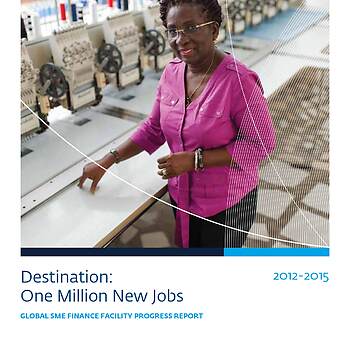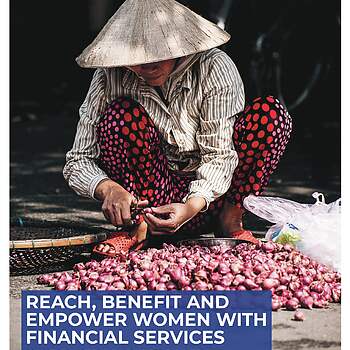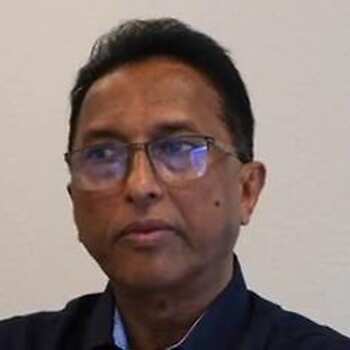The landscape of microfinance and credit for women-led SMEs
Access to finance is not only important for informal women workers and women entrepreneurs. It is important for all women, whether or not participating in the labor market, and whether they are in agriculture, informal work and formal employment or as entrepreneurs. Worldwide, some 750 million women remain outside the formal financial system in 2023. To make up for this lack of access women have since long organized themselves around customary savings and credit clubs such as tontines in West-Africa, kasmoni in Suriname and simpan-pinjam in Indonesia, or more modern Village Savings and Loans Associations (VSLAs). These organizations continue to be of importance for many women.
Microfinance organizations were amongst the first organizations to help poor women gain more access to finance. Two initiatives developed in Bangladesh were very influential: the Grameen Bank founded in 1983 by Muhammad Yunus, and BRAC that started micro-finance in 1986. They offered lending and saving services combined with group formation, awareness raising and training on financial literacy and skills, the latter needed for the envisaged income generating activities. They had women as their main clients. They built on the work of NGOs in India such as SEWA and the Women Workers Forum. Their achievements were internationally recognized, and the United Nations dubbed 2005 the year of microcredit. The microfinance model was taken up by other NGOs, donor governments and international organizations such as World Bank.
Microfinance remains of great importance to women. The number of women served by microfinance institutions (MFIs) grew exponentially from 10 million in 1999 to nearly 70 million in 2005 and 112 million in 2018. However, as with all credit systems, microfinance did not always benefit the customers. The debate on the merits and risks of micro-credit helped professionalize microfinance systems, and reinforced customer protection. The sector has grown into a sizeable global industry. Microfinance institutions have achieved financial sustainability; diversified their services beyond credit by adding saving, training, insurance and payments; and leading MFIs have embraced the digital age. Digitalization of finance got a boost as a result of the lockdowns during the covid-19 pandemic.
Still, women SMEs face constraints in accessing loans. Globally, there is a credit gap between demand for credit and its supply, and it is worse for women-led SMEs. Women have more problems in meeting the loan requirements at mainstream or social banks, notably collateral. Moreover, gender biases play a role in bank staff’s assessment of credit requests, with women’s requests more often rejected. This also applies to other categories of women, like women farmers. International support for financial inclusion, notably for women, increased around 2010. For example, in 2012, the G20 group of world leaders called for greater financial inclusion.
Dutch support to improve access to finance for the poor, by reforming the financial sector
Improving access to finance for the poor, through structural reforms of the financial sector, has been on the agenda of MFA since the early 2000s. MFA joined forces with several stakeholders. It joined the Consultative Group to Assist the Poor (CGAP), a global partnership of more than 30 leading development organizations to advance the lives of poor people, especially women, through financial inclusion. In 2003, MFA joined forces with several NGOs and financial institutions in the Netherlands platform for Microfinance (NpM). Later on, this was renamed into Platform for Inclusive Finance.
In 2006, MFA created the MASSIF Fund at the Dutch development bank FMO. The main aim of the MASSIF Fund is to strengthen financial sectors and promote micro, small and medium enterprises (MSMEs) in developing countries. Over the period 2006-2019, MFA contributed EUR 351 million to the MASSIF Fund. Since 2014 MFA intensified discussions with MASSIF Fund and FMO staff to mainstream gender equality more visibly in its operations. Since 2017, women-led micro and small enterprises have been made one of four target groups for MASSIF investments. An external evaluation of the Fund (2015-2019) still showed that MASSIF’s impact on improving access to finance for women was difficult to assess given limited data coverage and absence of a benchmark.
Since 2012 the concepts of Inclusive Finance and Financial Inclusion gained ground in MFA’s policies, with special attention to women-led SMEs. This was reinforced by Minister Ploumen’s policy to include women entrepreneurs as important target group. Several new projects or programs reflected this new emphasis. The most important was the Dutch Good Growth Fund (see below). Furthermore, in 2015 MFA provided funding to the IFC Global SME Finance Facility, a global partnership to help close the financing gap for SMEs. The facility dedicates its efforts to the most underserved segments, including women-led enterprises. MFA also supported the Financial Alliance for Women, a leading network of financial organizations dedicated to championing the female economy. The most recently started project is the AFAWA project of the African Development Bank. This Affirmative Finance Action for Women in Africa is a pan-African initiative to bridge the USD 42 billion financing gap facing women in Africa.
About the DGGF: In 2014 the Dutch Good Growth Fund (DGGF) was created as a flagship project of the new policy to merge the portfolios of international cooperation and trade. A budget of EUR 750 million was reserved for this Fund. It was to show the synergy between ‘aid’ and ‘trade’. It had three tracks: 1) Support for Dutch SMEs for development related activities; 2) Support for financial access for SMEs in partner countries; and 3) Export credit insurance for relevant activities of Dutch companies. The DGGF was to pay special attention to women entrepreneurs. In the end MFA set concrete gender targets only for track 2 projects. An external evaluation observed in 2020: “The initial MFA gender/youth/fragile states targets were modest, and limited to Track 2; and only Track 2 has developed its investment portfolio with these target groups in mind. This track has already exceeded MFA’s modest targets (15% women entrepreneurs), and is on a deliberate upwards trajectory.” The fact that the targets were exceeded was encouraging. The DGGF could provide lessons and best practices for MFA’s overall strategies on financial access to women.



